FORT HOOD, Texas - In what Lt. Col. Thomas Shoffner hopes will become a "habitual relationship" with troops from the 4th Battalion, 227th Aviation Regiment, Soldiers with the 4th Squadron, 9th Cavalry Regiment got a rare opportunity to work with their airborne brethren.
Soldiers with Troop B, 4-9 Cavalry, 2nd Brigade Combat Team, 1st Cavalry Division, conducted air-to-ground integration training while out in the wilderness of
Fort Hood May 9.
What started as a few days in the field reinforcing troop tasks like movement, communication and individual skills, quickly turned into an opportunity to learn how to use aircraft for more than just destruction.
Troops from the "Dark Horse" Squadron learned how to make radio contact with the AH-64 Apache aircraft and how to use them as eyes in the sky to find enemy forces and watch over troops while they conduct ground operations.
For Soldiers like Staff Sgt. Nathan Woodruff, a Tucson, Ariz., native, this training wasn't all that new. However, he remarked about how valuable a skill it can be to have a working knowledge of air-ground communication.
"This teaches good fundamentals that will transcend into usability when we go back to Iraq," he said. "By learning this, we're able to use the Apaches and have them lead us on when we're in battle."
For newer, more inexperienced troops like Pfc. Matt Turpin, a Long Beach, Calif., native, this was a rare opportunity to branch out and learn a new skill that would contribute to the whole team's effort.
Turpin, who is used to lugging around the extra weight of a radio as the squad's radio transmission operator, said he had a good time doing it, regardless of the sweat dripping off his face afterward.
"This is my first time doing anything like this," he said. "It was a good learning experience."
The scenario was simple: suspected enemy roughly 650 feet north of the platoon's position. Squad by squad, they'd communicate with the air asset all while rushing the enemy at break-neck speed.
While firing, running and communicating all at once, the troops were able to keep an eye on the targets even though they couldn't see them thanks to the Apache overhead.
No matter where the enemy ran to, the Apache was able to keep tabs on them while the troops advanced forward for the kill.
Despite the persistent sun and a more-persistent enemy, Cohen said all the sweat and exhaustion is well worth it.
"It's a good thing to get a jump on early before we deploy again," he said. "This helps ensure we'll be more proficient when the time comes to use assets like Apaches."
Before even going into the field, the troops were introduced to their counterparts from the 4-227th Attack Aviation Battalion. They were taught check-in procedures as well as just what Apaches were capable of doing in combat situations.
The sound of an Apache helicopter brought back memories of Iraq to Staff Sgt. Buakai Tamu of Troop A, 4-9 Cav.
"It's an opportunity that could not be missed," said Tamu, who is from Sierra Leone. "It only increases cohesion and morale and improves training."
The training was conducted in an area with heavy vegetation where the troopers often couldn't physically see the location of the opposing forces.
"Where we couldn't see the enemy, the AH-64 pilots were radioing down where [the enemy forces] were moving to," said Spc. Robert Turner, Troop B, 4-9 Cav.
According to Shoffner, this training event is just one example of how members of the First Team are working hard to establish relationships between units and integrate those relations into their training before they have to deploy to Iraq.
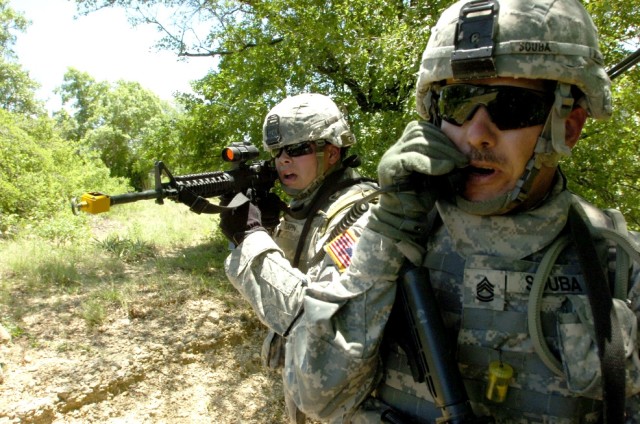
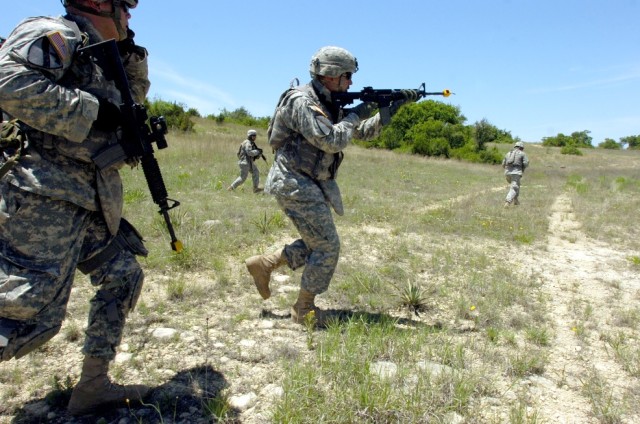
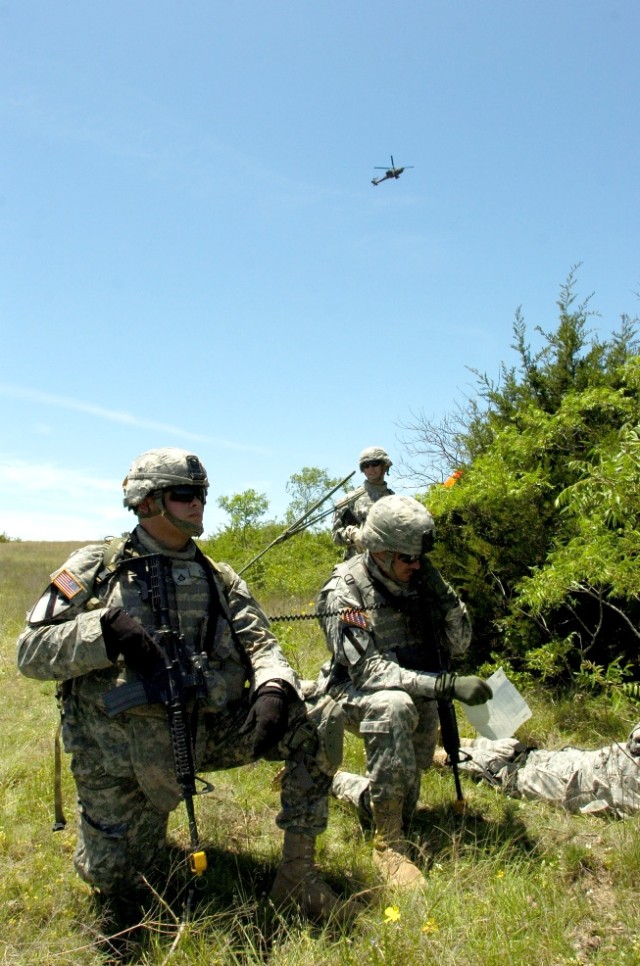
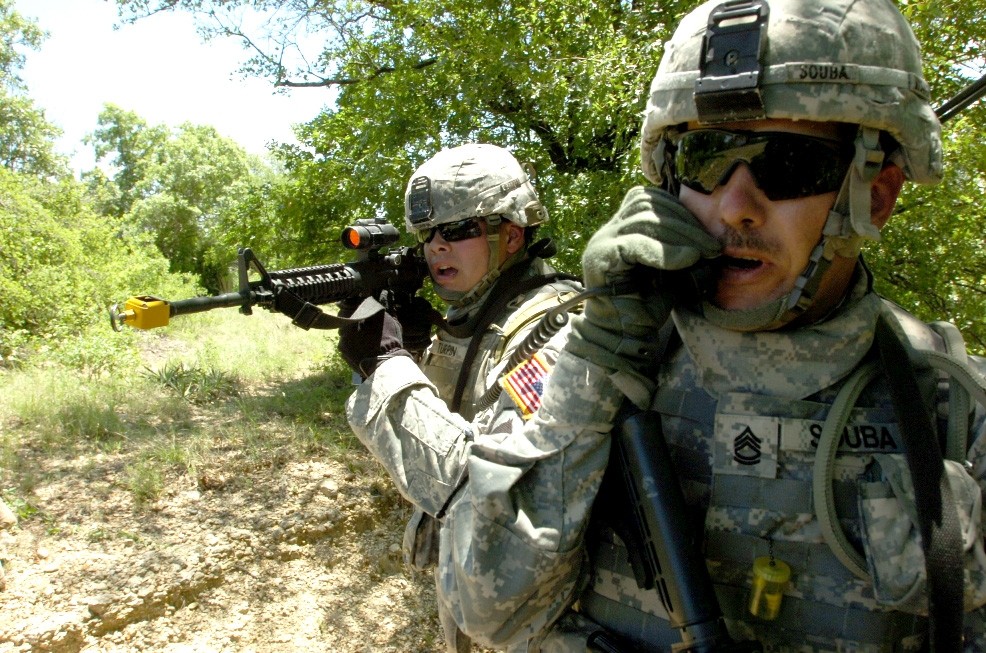
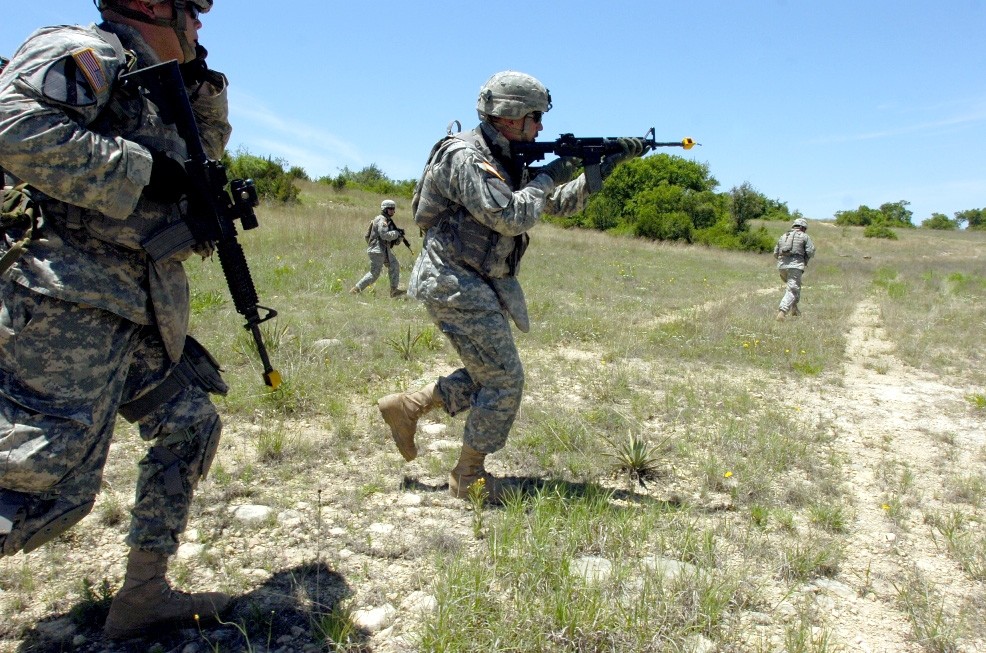
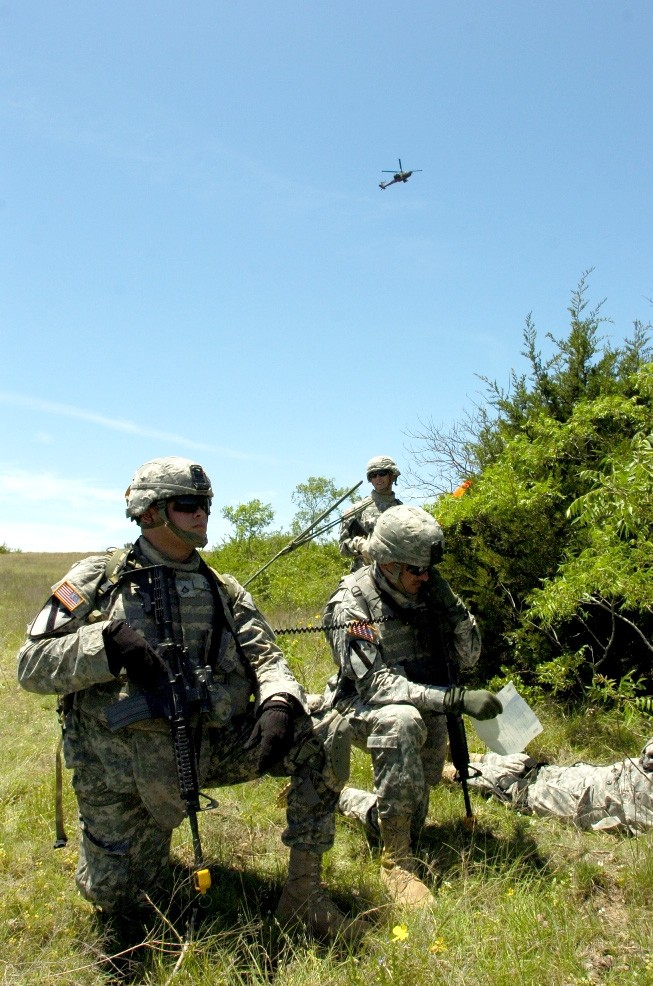
Social Sharing